
Marylebone is one of those London places, and to be fair there are more than a few, that has a name seemingly designed to trick unsuspecting tourists into mispronouncing it. Even Londoners struggle to agree on the correct way to say it – usually ranging from Marleyb’n to Marryleb’n. Some of an older vintage still say it as Marrowbone which is exactly how Pepys spelled it, and presumably pronounced it, when he described it as ‘a pretty place’ in his diary. Marylebone at the time was a small semi-rural village of about seventy houses the main road of which was roughly where Marylebone High Street is now.
Pepys first visited in 1667 and exactly three hundred years later another diarist, Kenneth Williams, at the time increasingly prone to misanthropy, wrote: ‘There really is no point in my existence at all…the nits crowding round outside the waxworks. How I loathe them and Madame Tussaud’.

Kenneth Williams in his Marylebone flat
Kenneth Williams’ flat was on the ninth and top floor of Farley Court that overlooked the famous waxwork museum that had made its home in Marylebone in 1835. Initially the actual Madame Tussaud lived and exhibited her wax models in Baker Street but due to her museum’s popularity it moved to its present location on the Marylebone Road in 1884. It’s been attracting an extraordinary amount of tourists ever since.
On Valentine’s day in February 1933, Madame Tussaud’s [https://www.madametussauds.com/london/en/] began to advertise, rather proudly, their latest model – a wax effigy of ‘Herr
giving a Nazi salute. After all, he had recently just been made the Chancellor of Germany. Three months later, in May 1933, three men sneaked over a rope and poured red paint over the wax Nazi leader and then placed a prescient placard round the neck which read, ‘HITLER THE MASS MURDERER.’ The vandals soon gave themselves up and the next day appeared at Marylebone Police Court. When asked by the magistrate if they had anything to say they started yelling: ‘Down with Hitler! Down with Fascism!’ at which point supporters in the gallery joined in. After a big struggle with the police everyone was removed from the court. Hitler’s effigy was replaced three years later and was only permanently removed from the museum in 2016.
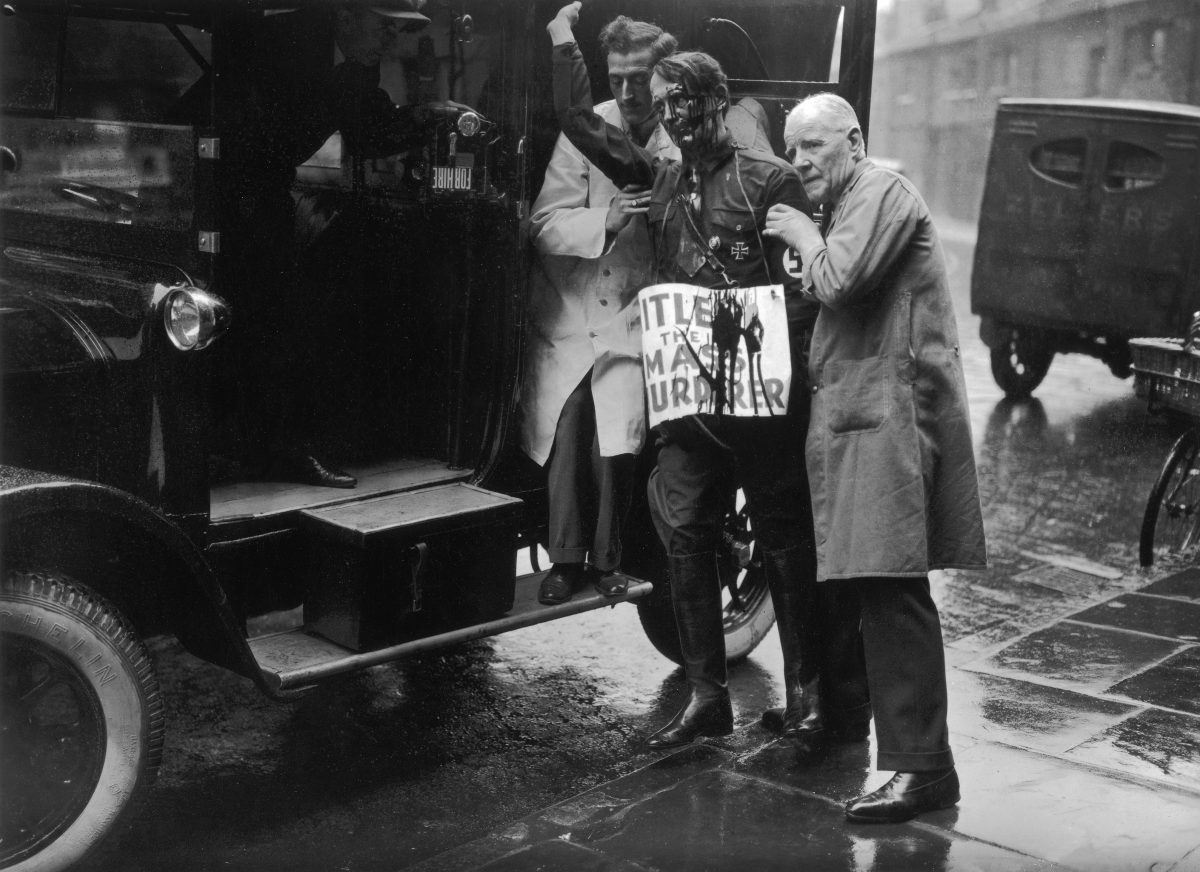
13th May 1933: The wax model of Hitler exhibited in Madame Tussaud’s in London being taken to Marylebone Police court as evidence used towards the conviction of three men and a girl after they attacked it as a protest. (Photo by J. A. Hampton/Topical Press Agency/Getty Images)
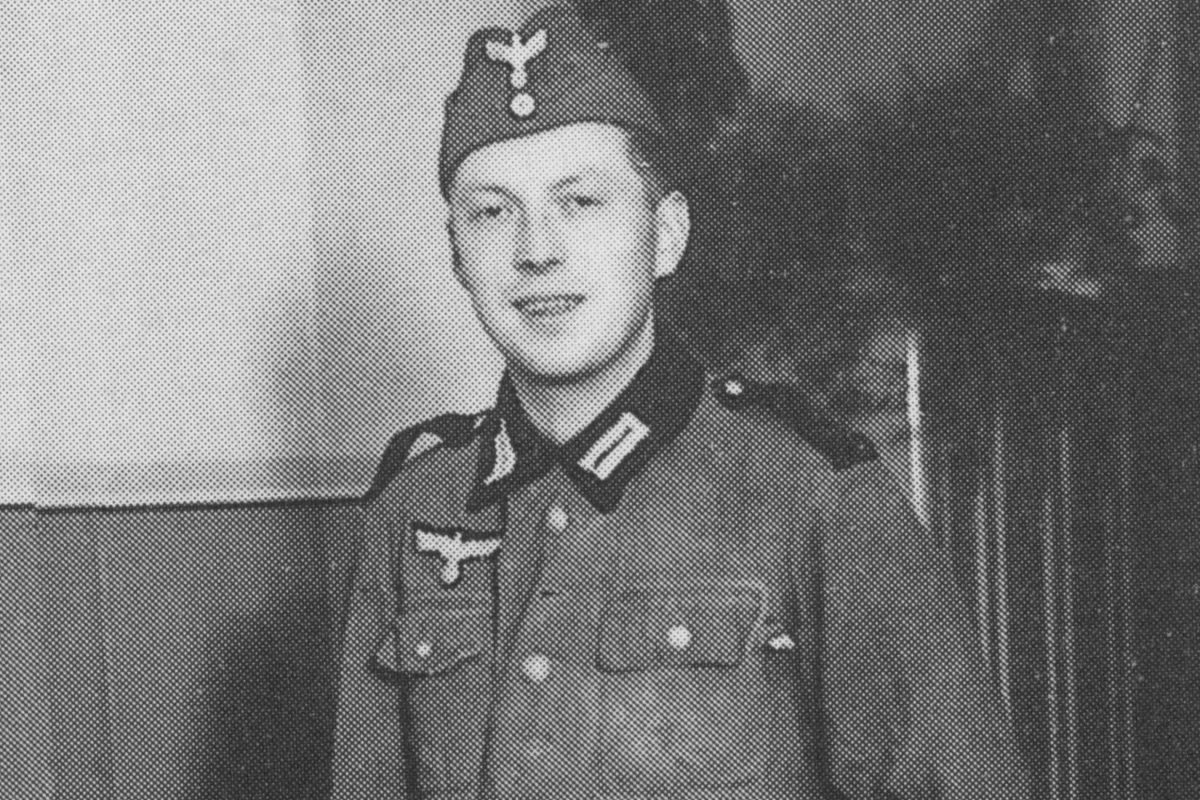
Airey Neave in fake German uniform, taken after he was initially captured at Colditz
In 1942, a man who had much to complain about Hitler, walked into what was once the Grand Central Hotel (it’s now the Landmark London Hotel [https://www.landmarklondon.co.uk/?gclid=Cj0KCQjw4s7qBRCzARIsAImcAxbmlpRGY5M7luc2hmpMAj4Py6hYdp38UA6H1jqYUIsR5kn150SVwdUaAhaCEALw_wcB]), just west of Madame Tussauds at 222 Marylebone Road. After being requisitioned by the War Office the hotel was being used to debrief Allied military personnel returning from occupied Europe. Airey Neave (the future Tory MP and who was assassinated by the IRA in March 1979) had done just that by being the first British man to escape Colditz Castle. Returning to London via Scotland and dressed in an off-the-peg battledress with no insignia, Military Police were convinced he was a spy and continually asked him for his papers.
Neave had actually known the hotel before the war and had been attracted to “the brass bedsteads, the marble figures on the stairs and the massive afternoon tea.” At the reception where a “magnificent blonde” had once sat there was now a soldier. Neave later wrote of the encounter:
‘What is this place, Sergeant?’
‘The London Transit Camp, Sir.’ He studied me politely.
‘Where are you from, sir?’
‘Germany.’
He did not bat an eyelid.
‘Quite so sir. Then it will be MI9 you want. They are on the second floor.’
At the time two actual spies, Anthony Blunt and Guy Burgess, both already working for the Soviet Union, were sharing a Marylebone flat owned by Victor Rothschild and round the corner from the Grand Central Hotel at 5 Bentinck Street. This arrangement upset their Soviet control officers for permanently breaking the rule that agents should not be seen together.
Meanwhile Airey Neave, after his debriefing, went on to work at MI9, a unit dedicated to supporting resistance movements and helping prisoners escape. He became the immediate superior to Michael Bentine. The Peruvian-born comedian had recently left RAF training after he was accidentally injected with a pure culture of typhoid instead of the intended typhoid vaccine. Bentine fell into an immediate six week coma and woke with ruined eyesight.
Some twenty years later in December 1963 Paul McCartney moved into 57 Wimpole Street – his girlfriend Jane Asher’s large family home. It was in the basement of this large Marylebone house that he and John Lennon wrote the Beatles first US number one I Want to Hold Your Hand and where he woke up with the tune of Yesterday in his head. Not half a mile away stands Marylebone Station which featured as a location in the Beatles’ movie Hard Day’s Night.
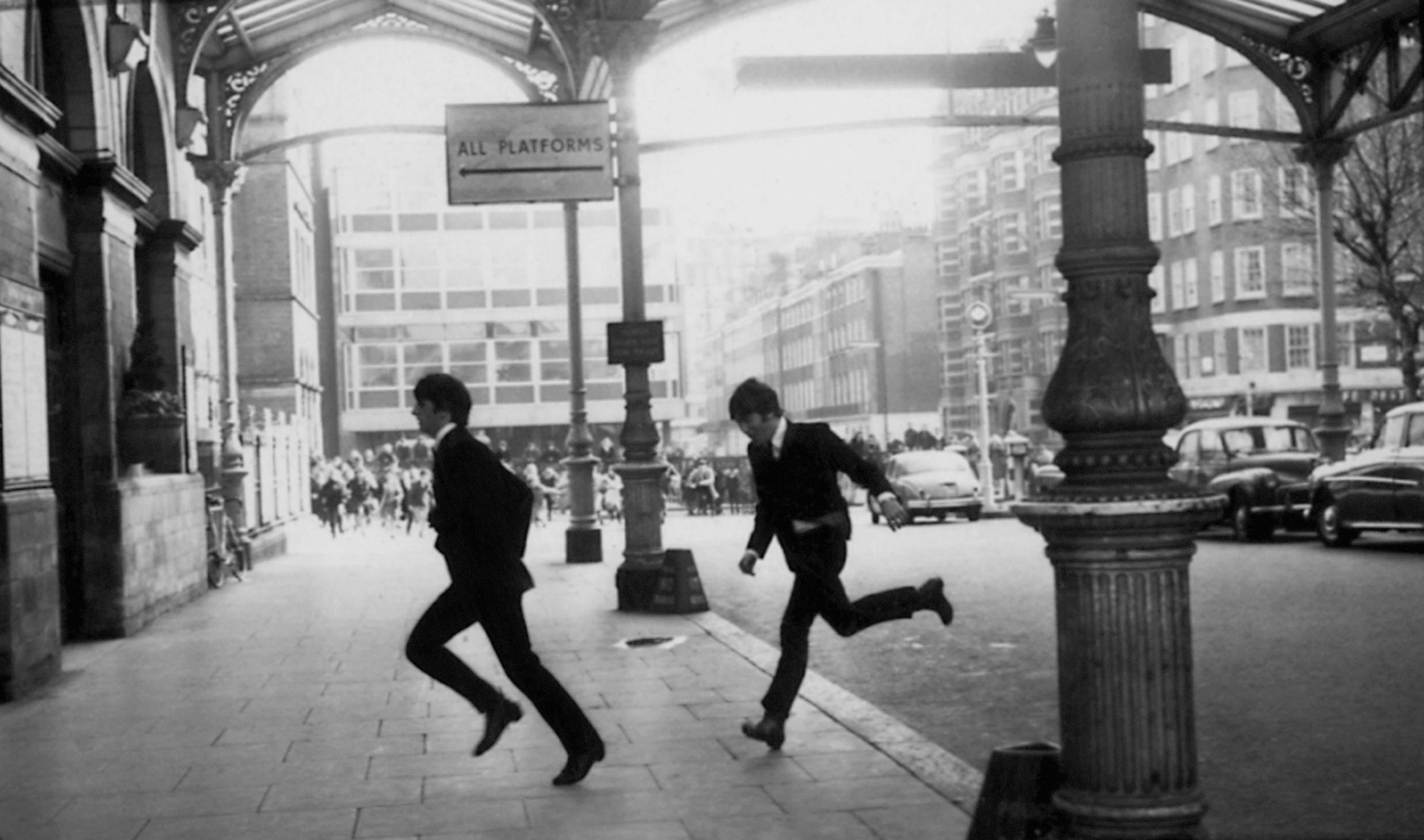
Ringo Starr (left) and John Lennon nip smartly into London’s Marylebone Station, just in front of a horde of fans closing in on them rapidly.
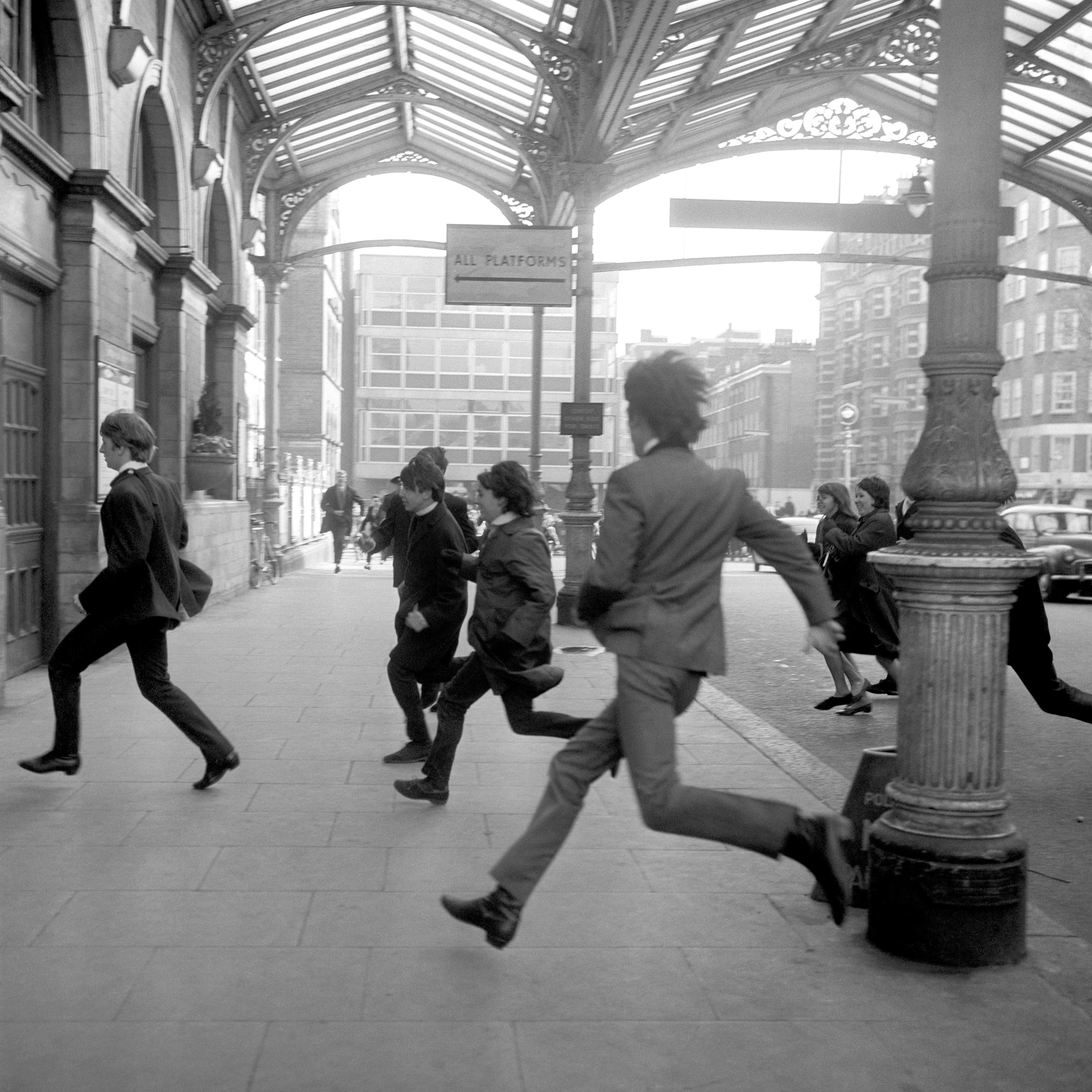
Ringo Starr just makes the doorway in front of racing fans.
Exactly a year before McCartney moved to Wimpole Street, on 14 December 1962 and a few weeks after the release of The Beatles first single Love Me Do, a man called Johnny Edgecombe took a taxi from Notting Hill to nearby 17 Wimpole Mews where his ex-girlfriend Christine Keeler was living. After she refused to come out to see him Edgecombe took out a gun and fired several shots at the door and window.
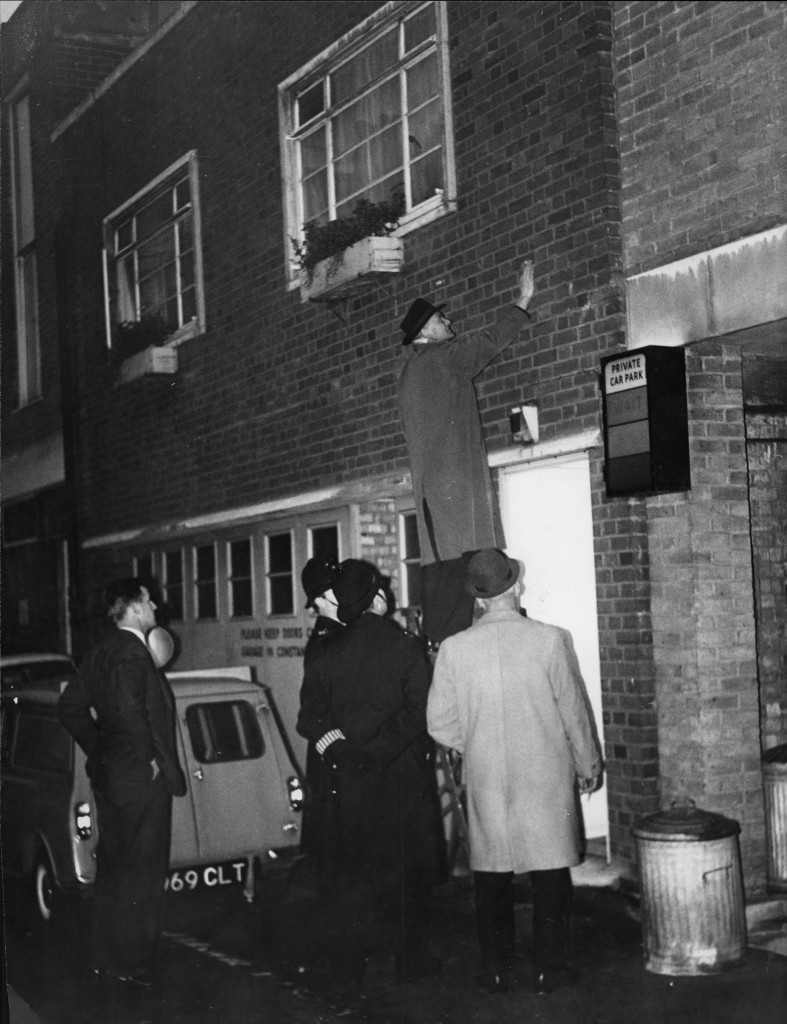
The Wimpole Mews house was actually the home of the society osteopath Stephen Ward whose practice was located nearby just off Harley Street. At the time two unknown actors called Terence Stamp and Michael Caine were sharing a flat at number 64 Harley Street in a house where the painter JMW Turner once lived. “Let’s share,” said an unemployed Caine, “one of us is pretty sure to be working. The one who is earning can pay the rent.” Stamp immediately agreed and then landed the lead role in the movie Billy Budd and ended up paying the rent for months. “Both of us were dab hands in the kitchen,” Caine once wrote, “Terry’s speciality was a pudding made of glucose powder, eggs and sterilised milk. ‘It’s very cheap and you can last a whole day on it, with a mug of tea to wash it down.”
Meanwhile Edgecombe’s arrest outside Stephen Ward’s mews house began the slow unfurling of the Profumo Affair which rather belatedly brought the name Rachman to the British public’s notice. Rachman had actually died the year before but his name, still synonymous with exploitative and unscrupulous private landlords, was mentioned in court as someone who had kept both Keeler and Rice-Davies as mistresses. The affair with Keeler was short-lived (“sex to Rachman was like cleaning his teeth and I was his toothbrush”) and they ended up hating each other but a sixteen year old Mandy was moved into his Marylebone flat at 1 Bryanston Mews in 1961 and lived there for over a year. She later described the flat:
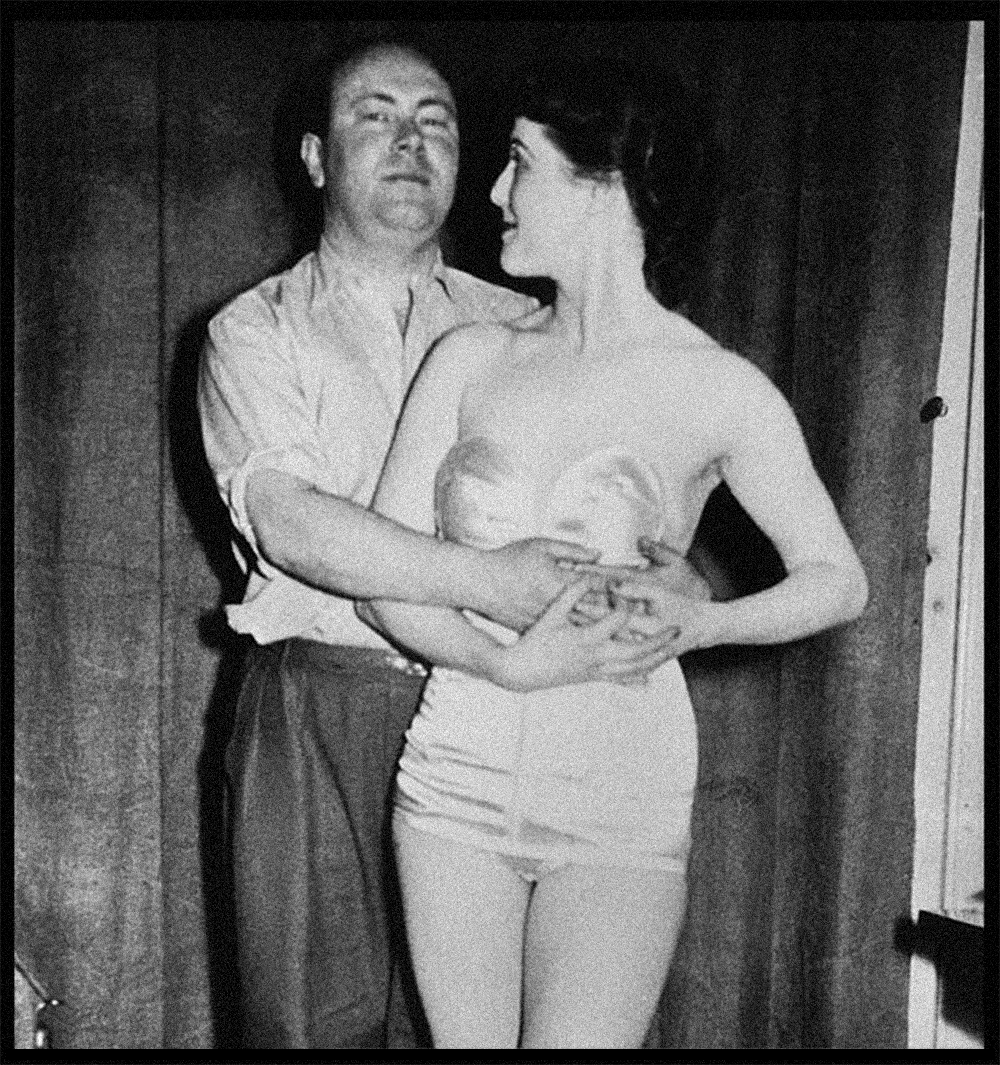
Rachman and wife in 1961, around the time he was having an affair with a 16 year old Mandy Rice Davies
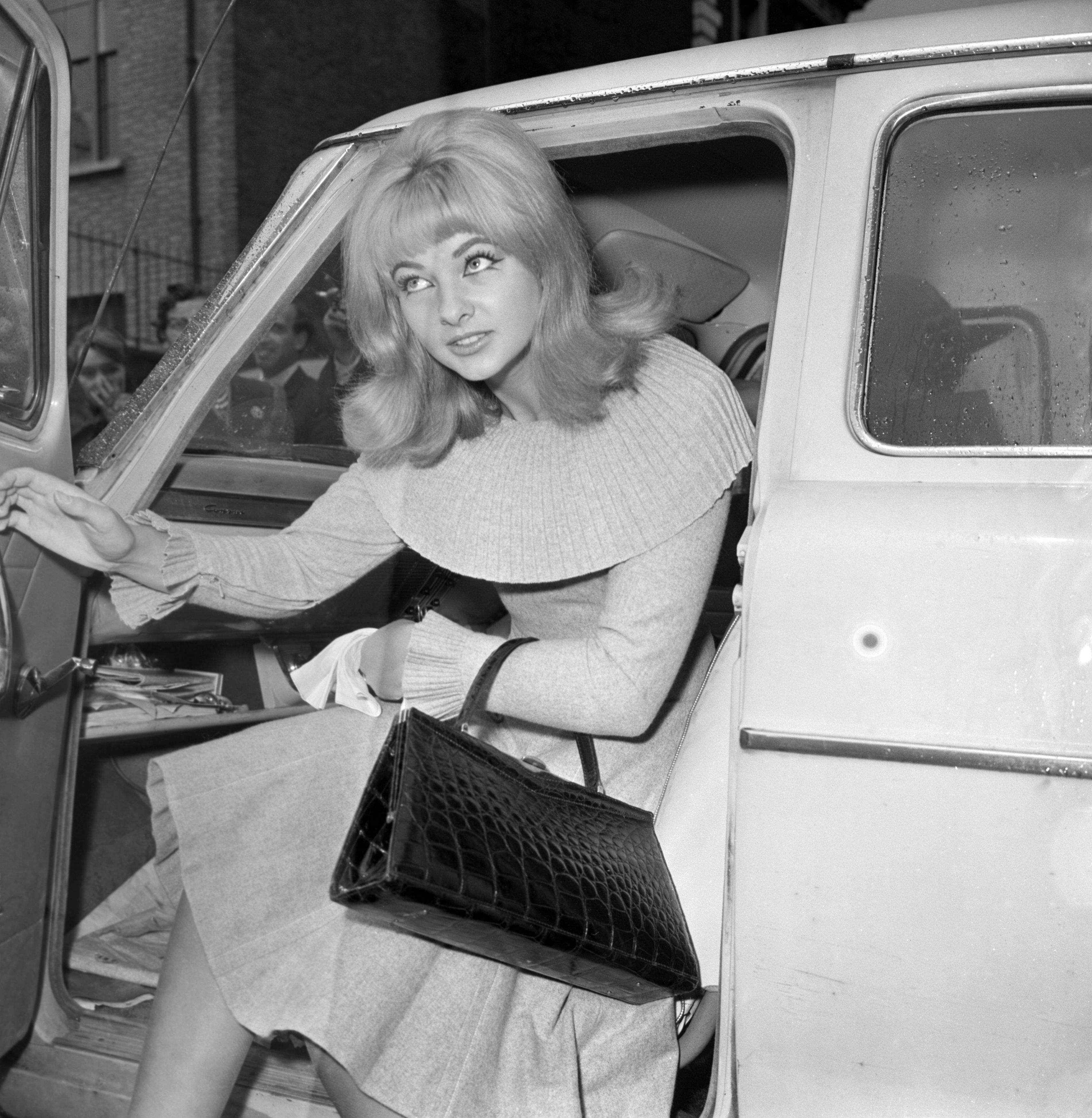
Mandy Rice-Davies
“It was the perfect bachelor-girl apartment, close carpeted soft green with a well-fitted kitchen and luxurious bathroom…there was a huge mirror in the sitting-room which gave a view of the bedroom next door. A two-way mirror, Peter explained, installed by a former tenant, Dennis Hamilton, just like the one he and his ex-wife Diana Dors had had their home in Maidenhead.”
Rachman died in November 1962 and Rice-Davies had already moved out of his Bryanston Mews flat when she heard the news. Immediately fainting, her first words when she came round were ‘Did he leave a will?”
221B Baker Street is still known throughout the world as the fictional Marylebone address of Sherlock Holmes and although numerically it’s not quite in the right place the address has now been taken over by the Sherlock Holmes Museum [http://www.sherlock-holmes.co.uk]. The Holmes short story ’The Red-Headed League’ published in 1891 featured a daring bank raid that involved a tunnel from a nearby shop. The robbery was foiled when the dusty robbers emerged into the vault straight into the arms of Sherlock Holmes and the police. Incredibly exactly eighty years after he wrote it Conan Doyle’s fictional robbery inspired something very similar actually in Baker Street.
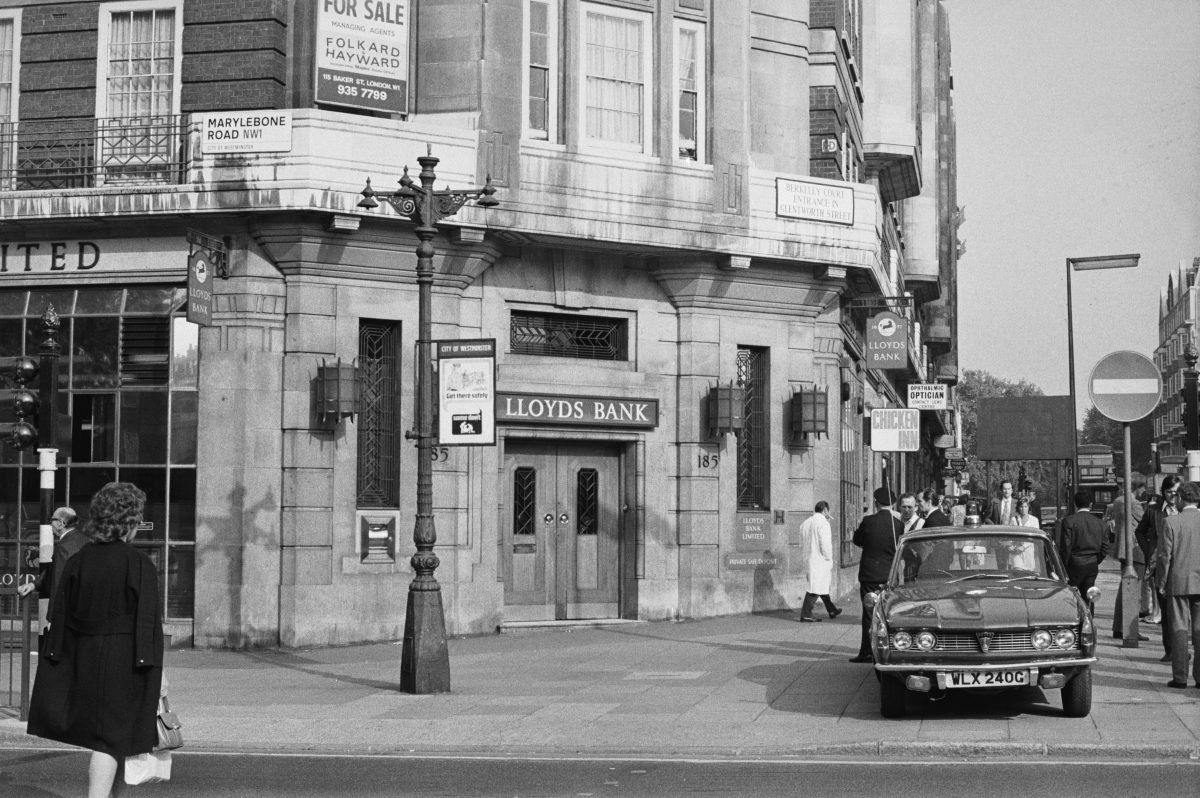
Baker Street Bank Heist 1971
Over a September weekend in 1971, a gang of thieves tunnelled underneath a Chicken Inn restaurant into the vault of Lloyds Bank at 185 Baker Street. A few hundred metres away in a flat on Wimpole Street a radio ‘ham’ called Robert Rowlands started picking up their walkie-talkie conversations. He called the police who initially dismissed his concerns but eventually started checking all the banks in the near vicinity. At one point they actually visited the Lloyd’s bank being raided but seeing that the bank vault’s door was locked closed they didn’t bother to investigate further. The gang went on to ransack the safety deposit boxes one of which contained, it was rumoured, compromising photographs of Princess Margaret. In the end the thieves made off with a haul in excess of £3million which in 1971 made it the largest ever bank robbery in Britain. Before they left the vault one man stopped to scrawl the words: “Let Sherlock Holmes try to solve this!”. Even if the great detective did exist he wasn’t needed and the four men responsible for the bank heist were gaoled in 1973.
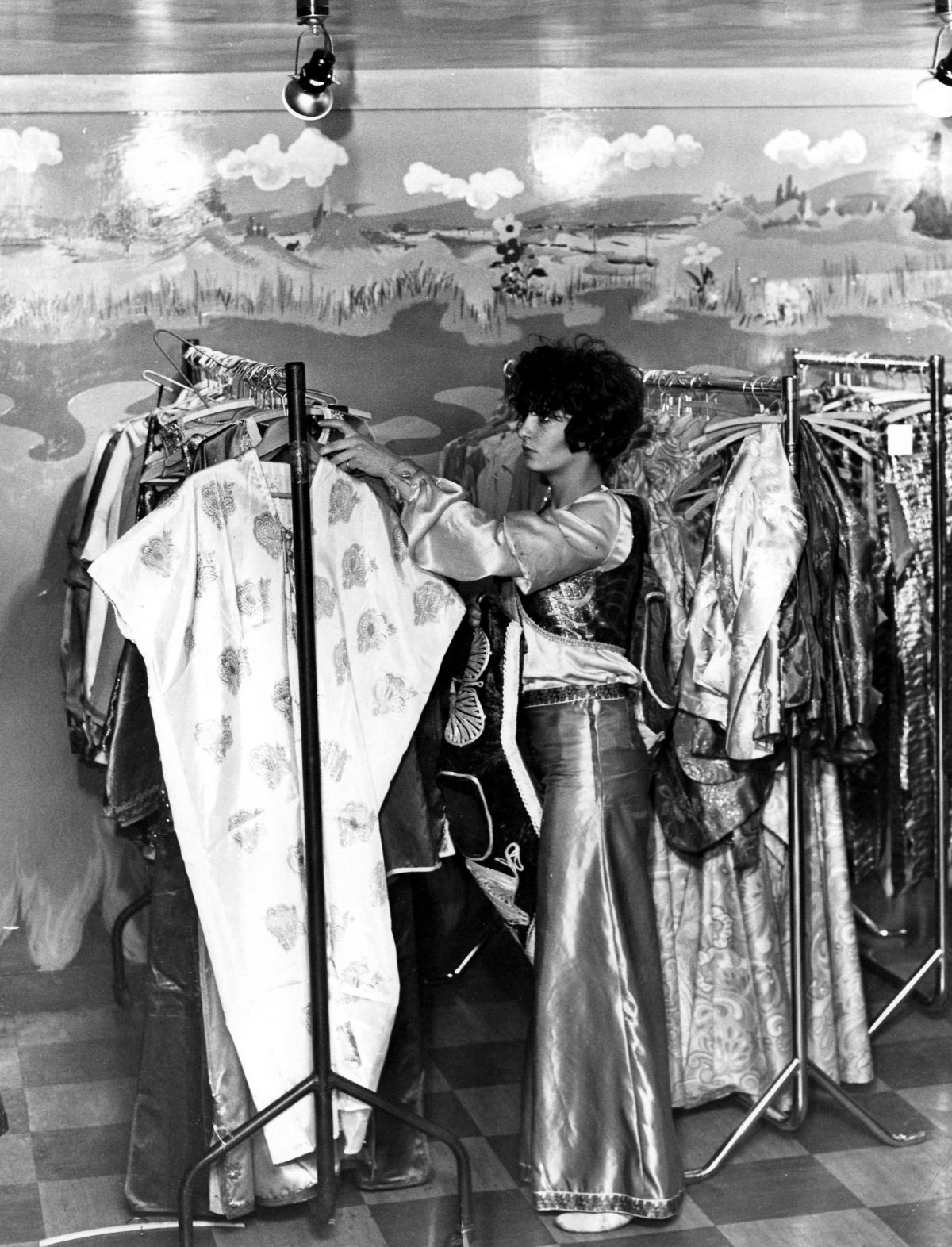
Inside the Apple Boutique in 1968 Baker Street.
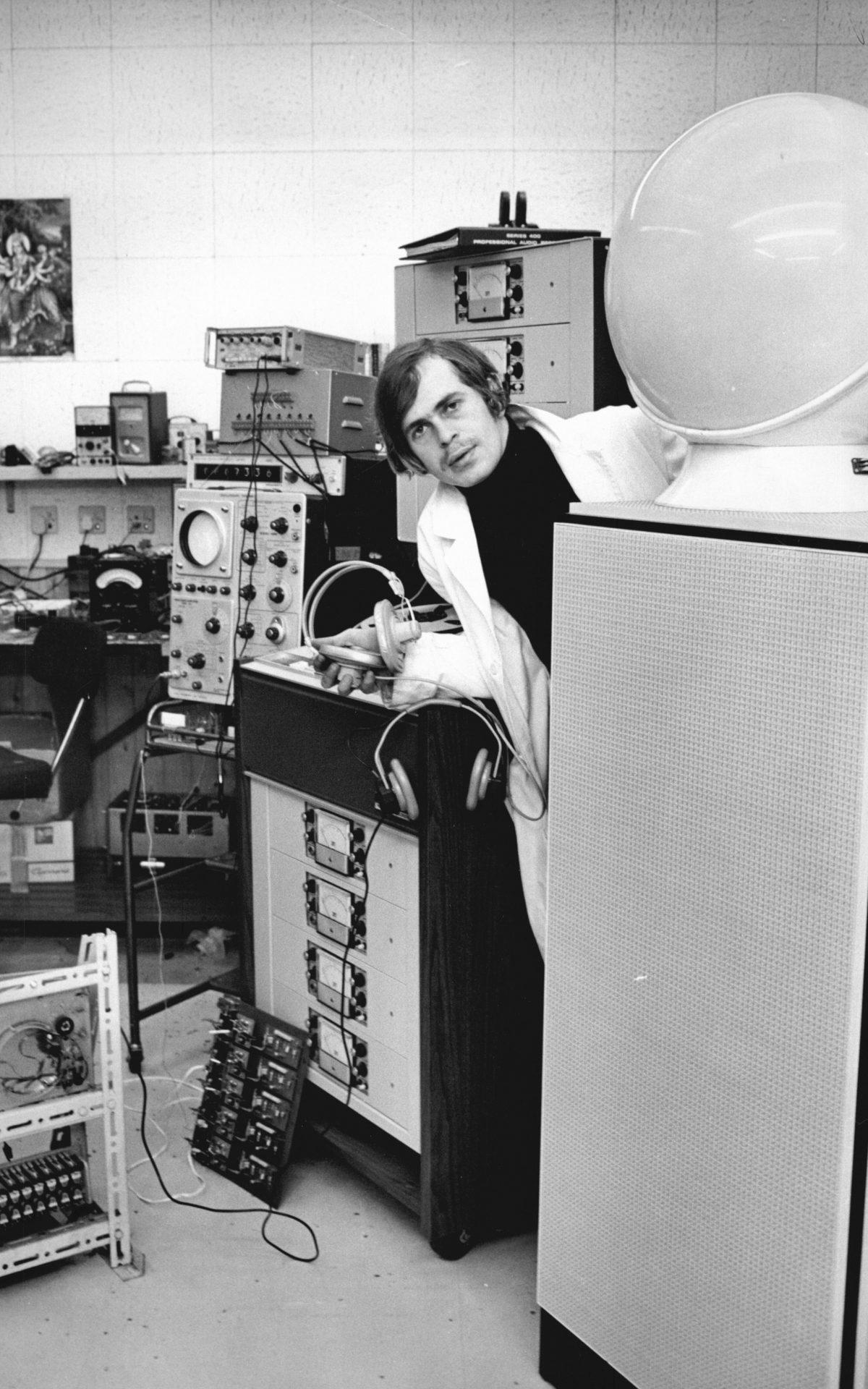
Alexis ‘Magic Alex’ Mardas

Ringo Starr just makes the doorway in front of racing fans.
Another famous address in Baker Street, albeit for a short while, was at number 94. The Apple Boutique opened on 7 December 1967 and was notable for being covered by a striking psychedelic mural by the Dutch design group The Fool. The Beatles asked a man called Alexis Mardis, known to their entourage as ‘Magic Alex’, to design the lighting for the shop. Magic Alex, who lived round the corner with Marianne Faithful’s husband John Dunbar at 11 Bentinck Street (five doors up from Blunt and Burgess’s old flat) promised an artificial ‘sun’ that would use laser beams to light up the sky. Unfortunately, and to little surprise of many, the artificial Sun did not materialise. It wasn’t until a year later that the Beatles realised that practically anything Magic Alex promised to invent failed to get past the drawing board or indeed even get on to a drawing board. After promising but failing to design and produce a 72 track tape recorder for their next album Alex was largely dismissed from the Beatles’ circle and disappeared into relative obscurity.
Three months after the Fool mural was removed at the insistence of Westminster Council the Apple Boutique closed for good at the end of July 1968. Shoplifting had become rife partly because in the era of ‘love and peace’ accusing anybody of stealing was difficult and rather uncool.
Kenneth Williams wasn’t always so down about Marylebone and was in a much happier mood when he wrote in 1963: “The trees are turning now and the sight is beautiful. I can see all the traffic twinkling down the Marylebone Rd … It’s all so marvellous, I could cry.” Which ever way you pronounce it, nowadays Marylebone is one of the most fashionable parts of London. It may be only a few minutes walk away from a crowded and noisy Oxford Street but the quiet and dignified Marylebone with its leafy streets lined with Georgian houses and sophisticated independent shops and restaurants seems almost a million miles away.
Would you like to support Flashbak?
Please consider making a donation to our site. We don't want to rely on ads to bring you the best of visual culture. You can also support us by signing up to our Mailing List. And you can also follow us on Facebook, Instagram and Twitter. For great art and culture delivered to your door, visit our shop.







